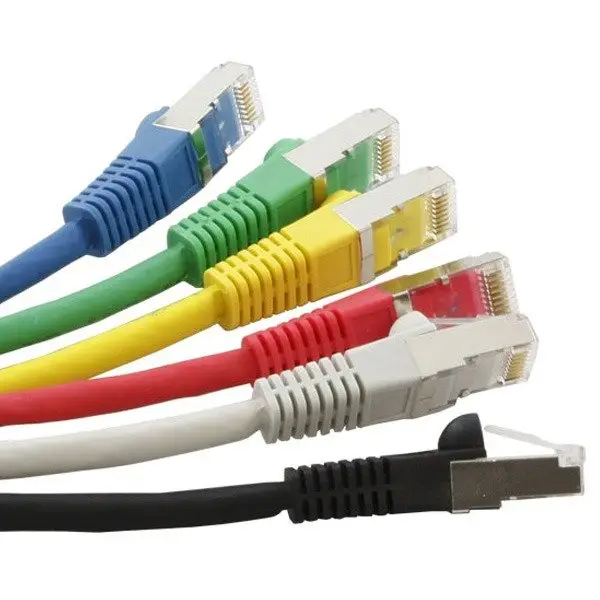How does an ethernet cable work?


An Ethernet cable, also known as a network cable, internet cable, LAN cable, or Ethernet connection, is a crucial component in establishing a wired connection between devices in a local area network (LAN). It allows for the transmission of data packets between devices, enabling them to communicate and share information. In this article, we will explore how an Ethernet cable works, its components, and the different types available in the market.
Understanding Ethernet Cables
Ethernet cables are designed to transmit data using electrical signals. They consist of several components that work together to ensure a reliable and fast connection. Let’s take a closer look at these components:
1. Twisted Pair Wires: The core of an Ethernet cable is made up of twisted pair wires. These wires are twisted together in pairs to reduce electromagnetic interference (EMI) and crosstalk. The most common type of twisted pair cable used in Ethernet connections is Category 5 (Cat5) or its enhanced version, Category 5e (Cat5e).
2. Insulation: Each twisted pair wire is insulated to prevent interference between adjacent wires. The insulation material used is typically made of plastic, such as polyethylene or polyvinyl chloride (PVC).
3. Sheath: The sheath, also known as the jacket, is the outer covering of the Ethernet cable. It provides protection against physical damage, moisture, and other environmental factors. Common materials used for the sheath include PVC, polyethylene, or thermoplastic elastomer (TPE).
How Ethernet Cables Transmit Data
Ethernet cables use a method called baseband transmission to send data. In baseband transmission, the cable carries digital signals, allowing for high-speed data transfer. Here’s a step-by-step breakdown of how Ethernet cables transmit data:
1. Data Encoding: Before data is transmitted over an Ethernet cable, it undergoes a process called data encoding. The data is converted into a series of electrical signals that can be transmitted through the cable.
2. Modulation: The electrical signals are then modulated onto the twisted pair wires. Modulation is the process of altering the characteristics of the electrical signals to represent the data being transmitted.
3. Transmission: Once the data is encoded and modulated, it is transmitted through the Ethernet cable. The electrical signals travel along the twisted pair wires, from one device to another.
4. Reception: At the receiving end, the electrical signals are demodulated and decoded back into the original data format. This allows the receiving device to interpret and utilize the transmitted information.
Types of Ethernet Cables
Ethernet cables come in various types, each designed for specific purposes and transmission speeds. The most commonly used types include:
1. Cat5: Category 5 cables were widely used in the past but have been largely replaced by newer standards. They support transmission speeds of up to 100 Mbps and are suitable for basic internet browsing and small networks.
2. Cat5e: Category 5e cables are an enhanced version of Cat5 cables. They offer improved performance and support transmission speeds of up to 1 Gbps. Cat5e cables are suitable for most home and office networks.
3. Cat6: Category 6 cables are designed for high-performance networks. They support transmission speeds of up to 10 Gbps and offer better resistance to crosstalk and EMI. Cat6 cables are commonly used in large networks and data centers.
4. Cat6a: Category 6a cables are an augmented version of Cat6 cables. They provide even higher transmission speeds of up to 10 Gbps over longer distances. Cat6a cables are suitable for demanding applications such as video streaming and large file transfers.
Conclusion
Ethernet cables play a vital role in establishing wired connections within a local area network. They enable devices to communicate and share data by transmitting electrical signals through twisted pair wires. Understanding the components and workings of Ethernet cables, as well as the different types available, can help you choose the right cable for your networking needs. Whether it’s for basic internet browsing or high-performance applications, selecting the appropriate Ethernet cable ensures a reliable and fast connection.
Recent Posts
How do I create an engaging and informative online quiz or assessment?
Creating an engaging and informative online quiz or assessment can be a powerful tool for… Read More
What are the most effective methods for managing and reducing work-related stress in the hospitality industry?
Work-related stress is a common issue in the hospitality industry, where employees often face long… Read More
How can I improve my assertiveness and communication skills in a leadership position?
In a leadership position, assertiveness and effective communication skills are crucial for success. Being able… Read More
What are the key elements of a successful employee recognition and rewards program?
Employee recognition and rewards programs play a crucial role in motivating and engaging employees, as… Read More
How do I effectively manage and respond to customer feedback and reviews?
Customer feedback and online reviews play a crucial role in shaping a company's reputation and… Read More
What are the best strategies for effective time management as a stay-at-home parent?
Effective time management is crucial for stay-at-home parents who juggle multiple responsibilities on a daily… Read More